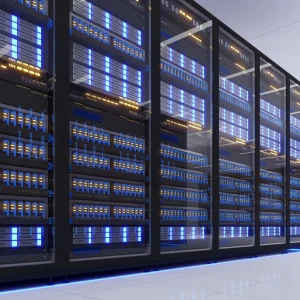
The cloud holds a great deal of promise for organisations, from improving customer experience to keeping pace with disruption, writes Lee James, CTO, EMEA at Rackspace. But with recent research finding only one-third of businesses have achieved their expected cloud outcomes, a big part of unlocking this promise is structuring your cloud team for success from the outset.
They say inspiration often comes from the most unexpected places and that adage is true when it comes to building cloud teams. Enter Fortnite, an online video game that has captured the world over with more than 200 million registered players. You may be surprised to read that a game designed for teens and up applies to your enterprise, but the principles of Fortnite – collaboration, individuality, and speed – are exactly what needs to be embedded in the structure of your cloud team.
What can the gaming world teach us about working on cloud projects and how can we apply that to how we structure our teams?
Building a Cloud Team? Embrace Individuality
People tend to become disengaged with their job and projects when individuality isn’t embraced. In Fortnite, individual skills are key as you work in small teams. This approach to welcoming and celebrating individuality is critical to the success of cloud teams. It means assigning people to different projects based on their experience, keeping teams lean and agile, and ensuring there is an opportunity for individuals to own certain parts of the project.

This approach also underpins how we work with customers at Rackspace.
For example, when it came to building the team for our work with British Heart Foundation, we pulled in individuals with previous experience in the not-for-profit space.
This has been key to understanding how the organisation is structured, what challenges and opportunities it faces, and how it operates on a day-to-day basis.
Build Together with a Common Goal
While individuality is to be embraced, those individuals need to work together as a team and towards a shared goal. There’s a strong emphasis on teams in Fortnite, with collaboration the key to breaking down barriers. Fortnite does not need a manager. The teams manage themselves, concentrated on the result. The game only lasts for 15 minutes and if you aren’t a good fit, you can move teams. This type of democratic environment means performance is transparent and everyone takes responsibility for the outcome.
When building cloud teams, you need to ensure all team members are aligned on the desired outcomes of the project and their role in achieving them. It also means building leaner teams where individuality can shine through and collaboration is maximised. We see this in Jeff Bezos’ two-pizza rule where if you can’t feed a team with two pizzas, the team is too big. This ensures agility, focus, and prevents the creation of siloes that often hamper communication within the team.
Rackspace helped UK-based software company Provenance move from traditional IT infrastructure to Microsoft Azure. This partnership was just as much about education and guidance as it was architecting the actual migration. To do this, we put together a small team of four – a lead engineer, a migration specialist, a DevOps engineer, and a project manager. This structure was specifically tailored to the needs of the customer, enabled closer collaboration, and empowered every team member to take ownership of a certain part of the project.
Move at the Speed of Gaming
Designed for the ‘attention generation’, Fortnite’s content is regularly updated to keep audiences engaged. There are parallels in the worlds of business and IT, which are operating in an increasingly fast-paced environment.
 With Fortnite only lasting 15 minutes, teams need to be able to move quickly and work under pressure.
With Fortnite only lasting 15 minutes, teams need to be able to move quickly and work under pressure.
This need for flexibility and agility applies to how cloud teams operate. To structure a dynamic team, build in a focus on fast delivery, create synergy, and establish methods for open and fast communication.
A big part of driving fast-moving, effective teams is motivation and celebrating wins – particularly in IT, where much of the work is about the success of a project.
In Fortnite, players dance when there’s a win. I’m not suggesting every cloud team starts to ‘floss’, but it’s important we remember to motivate teams by celebrating the mini wins along the way.
Embrace Failure
Fortnite players experiment and test different solutions, constantly improving and refining their strategy at very fast intervals – that’s how they win. The same applies to cloud teams. They too should continually weigh up and test how they can best work together to achieve success.
Failures in programming be viewed as a negative. But when it comes to cloud teams, there needs to be a collective mindset where failure is seen as a must. Because only in iterations will the best possible outcome be created. This requires a corporate culture where failure is accepted and a collective focus within the cloud team on pushing the boundaries from the outset.
Whether it’s a victory in a computer game or a successful cloud project, the structure of teams plays an integral role in the end result. Taking inspiration from Fortnite and drawing on the principles of individuality, collaboration, agility, and strategic testing, we have the foundation on which to build cloud teams for success.






